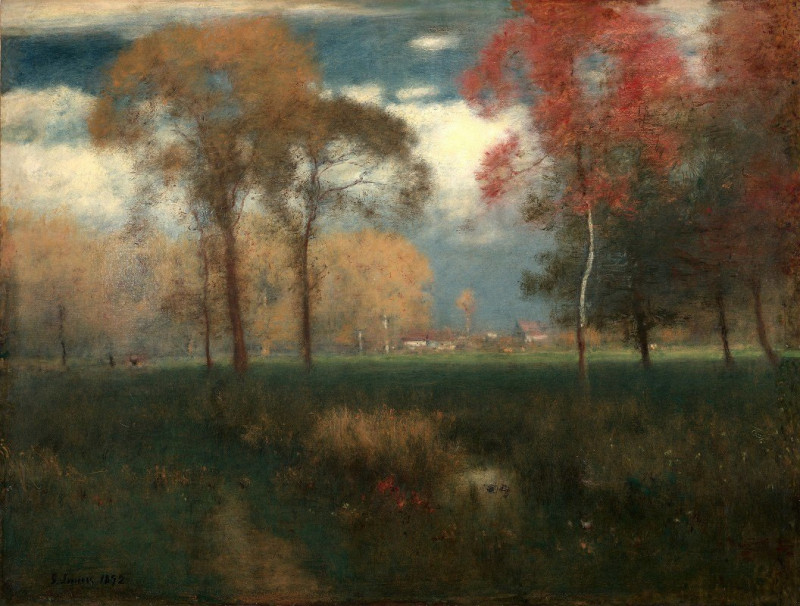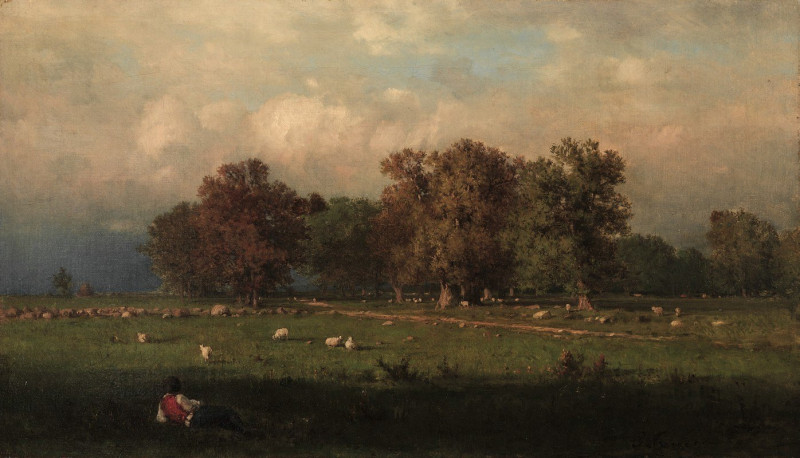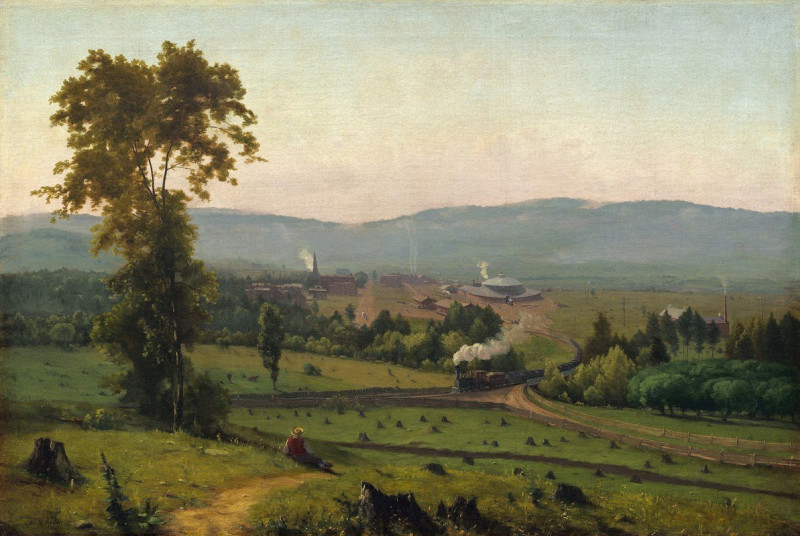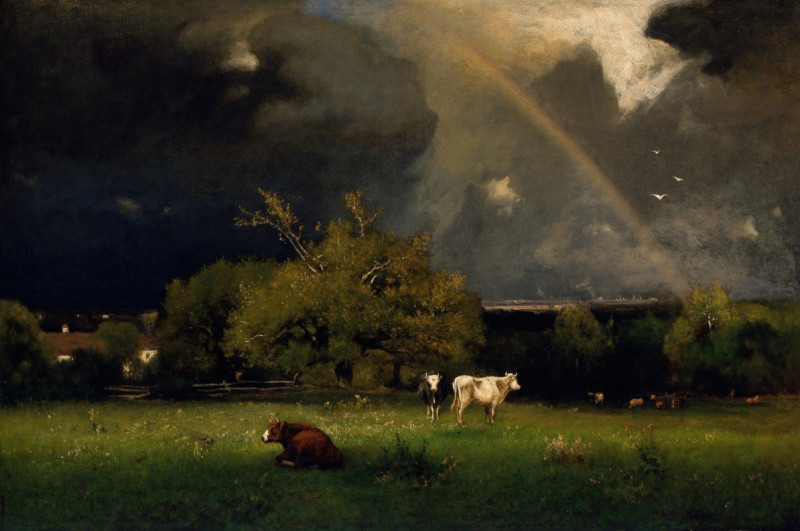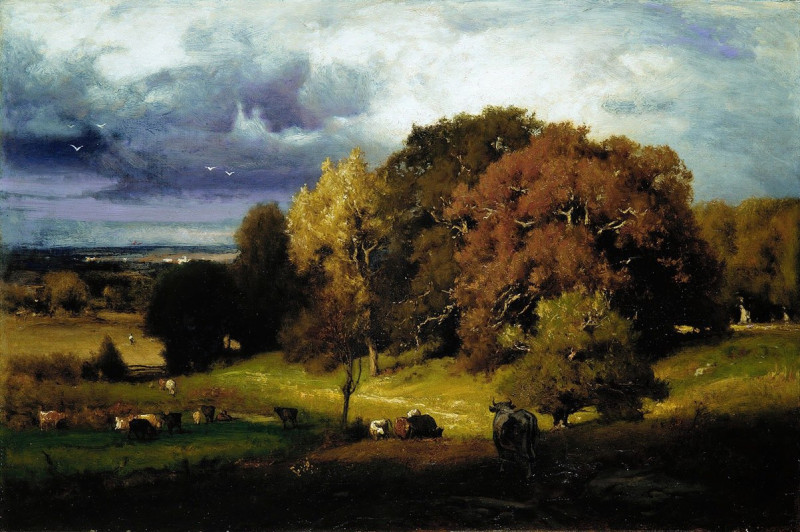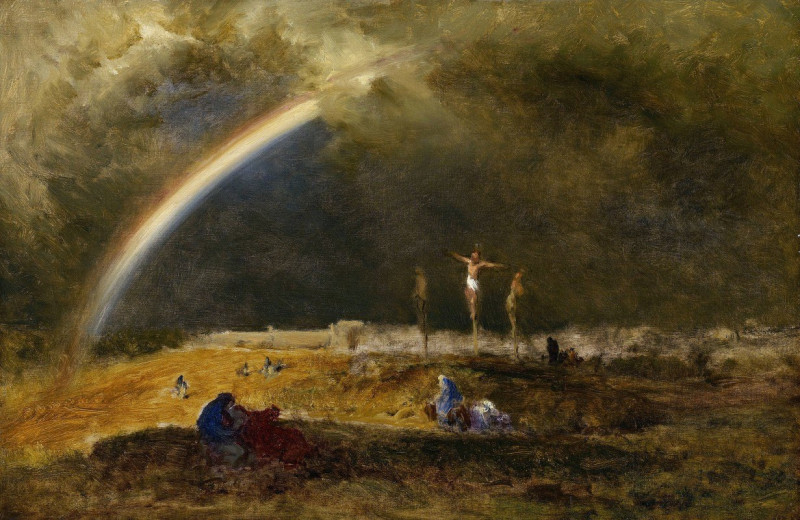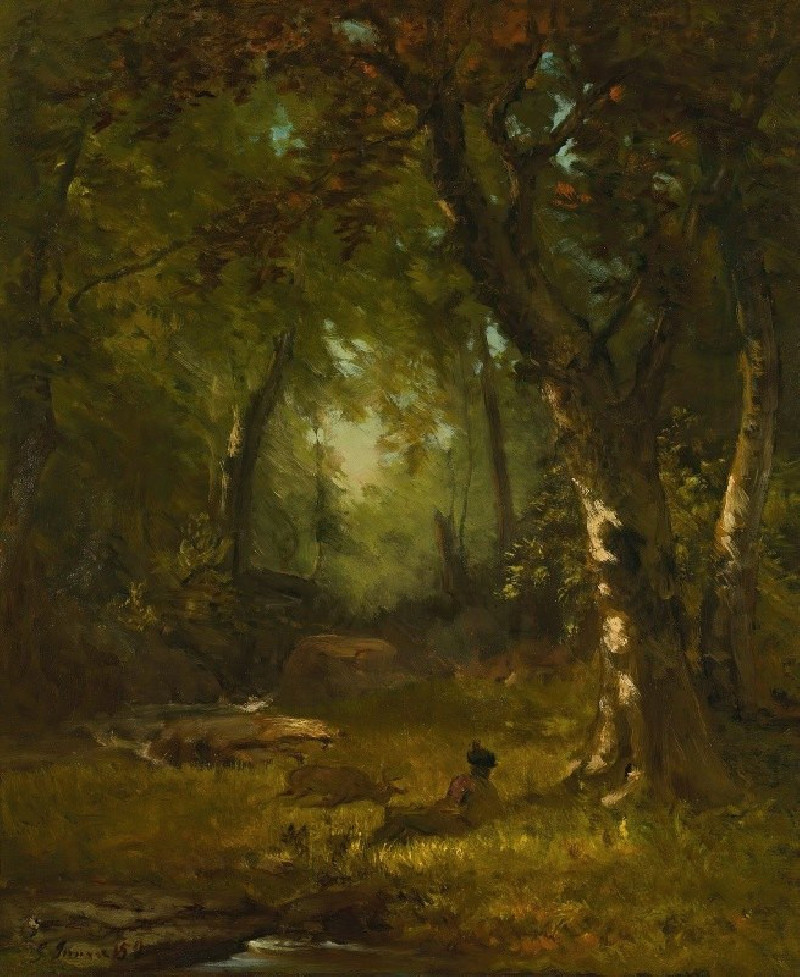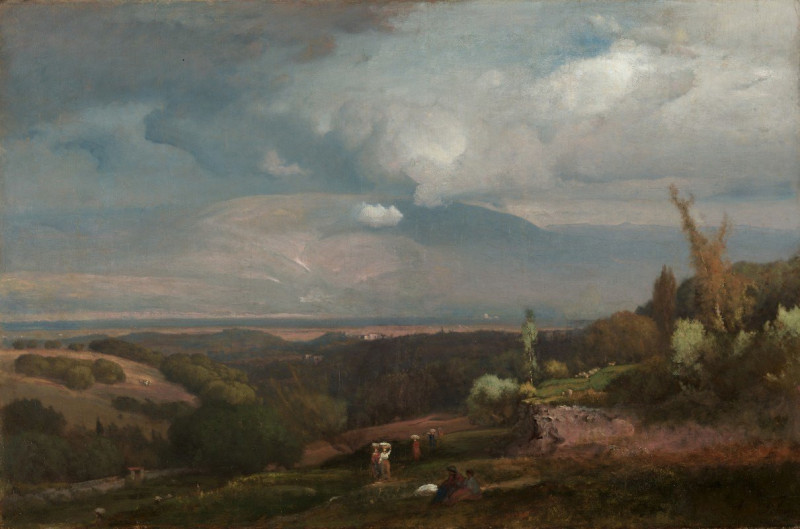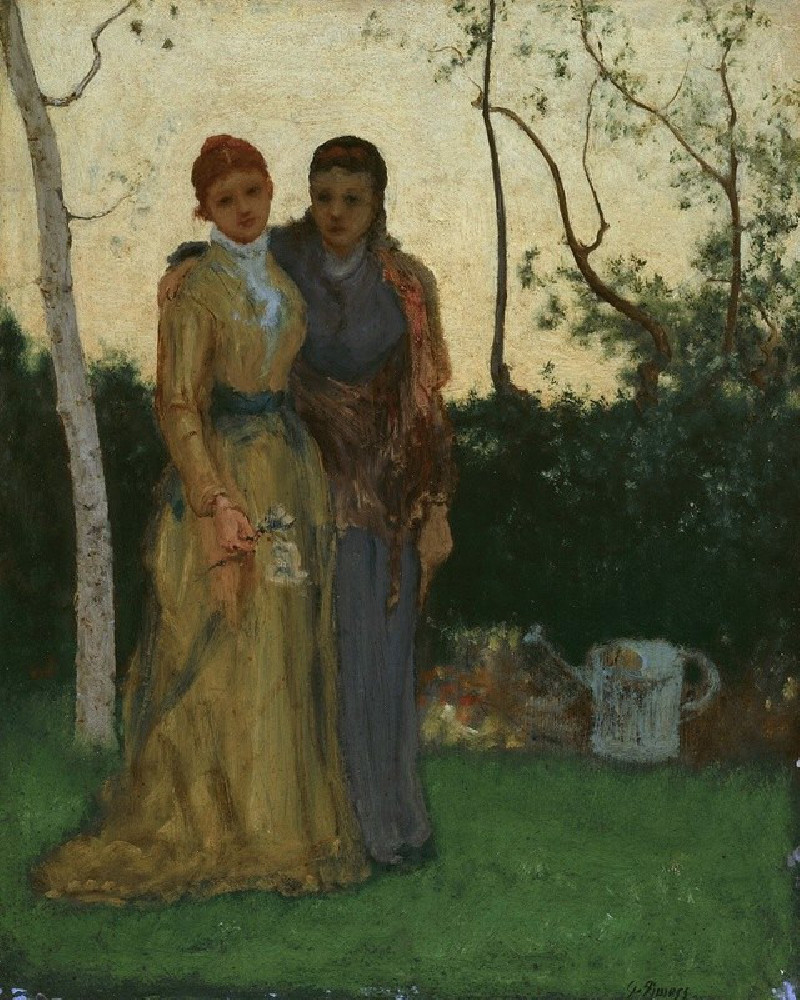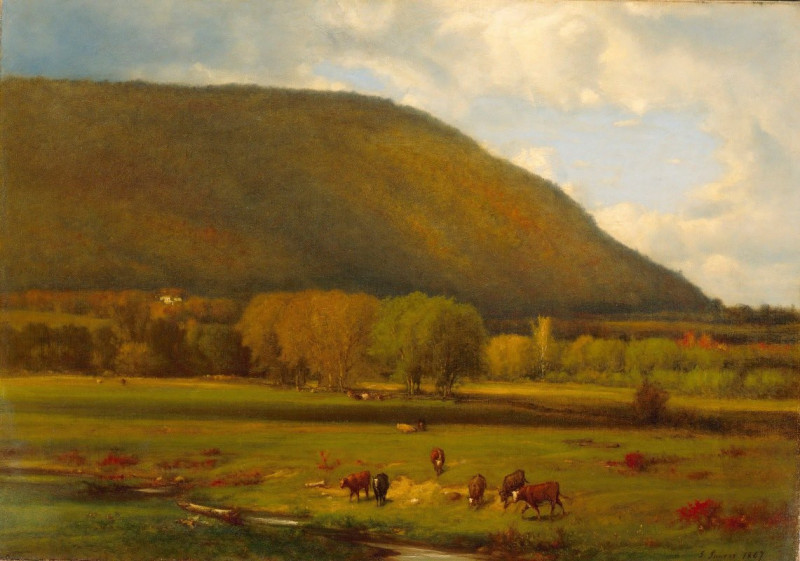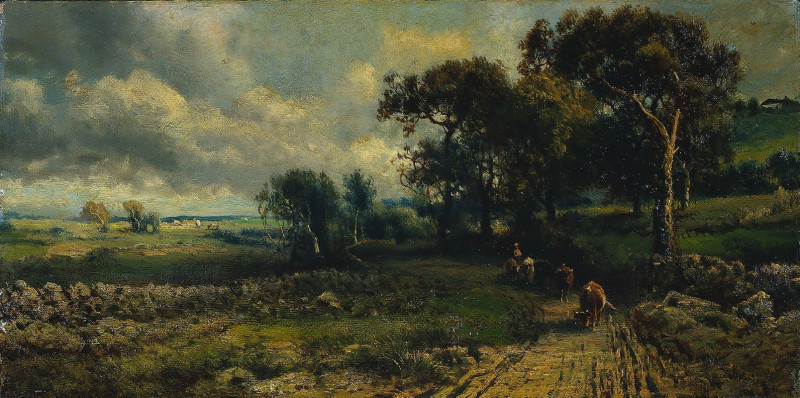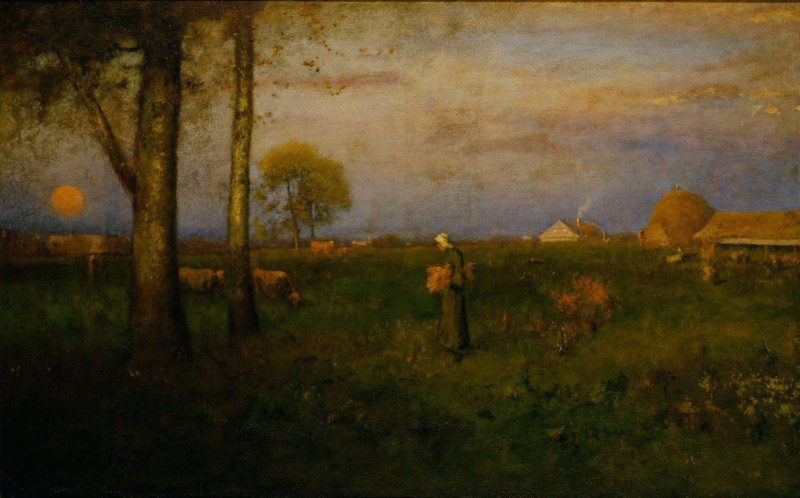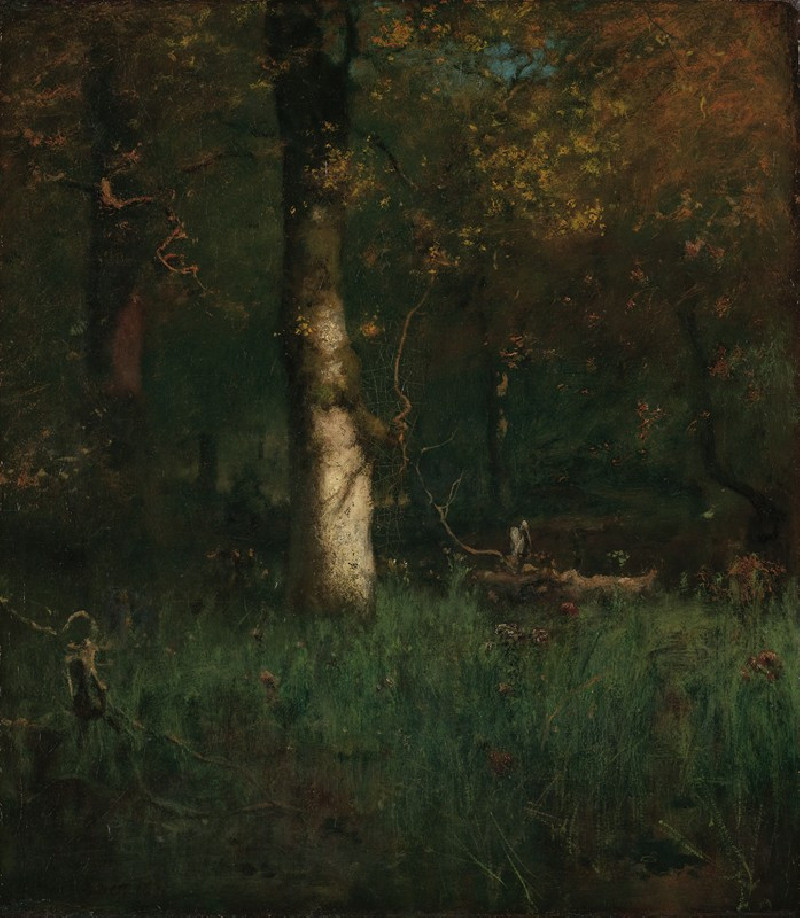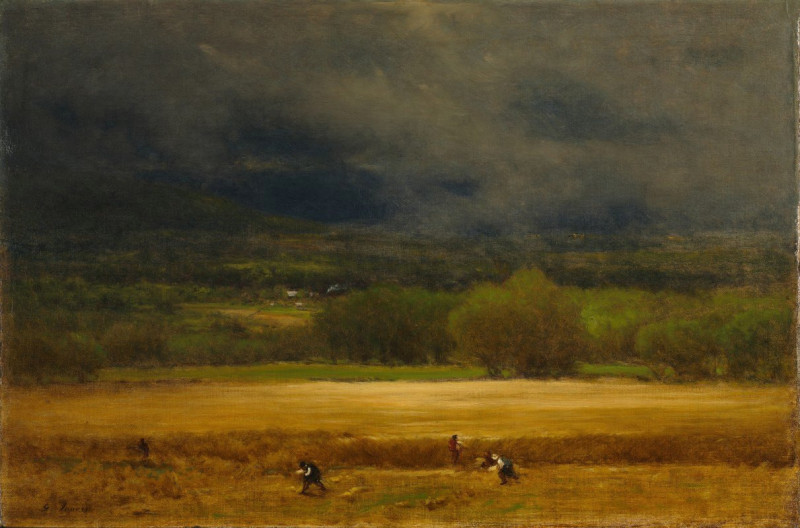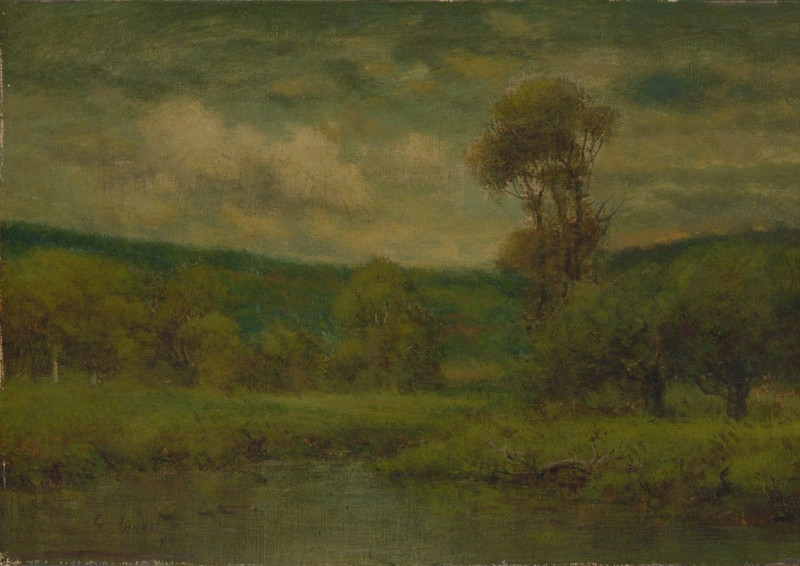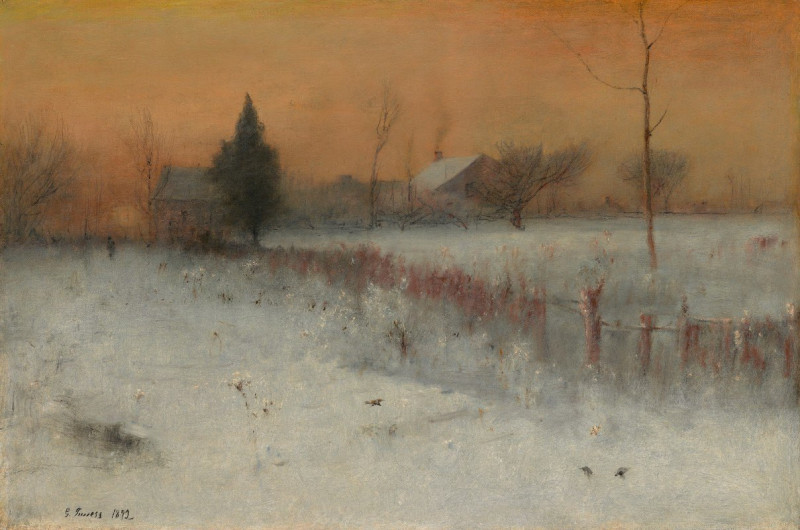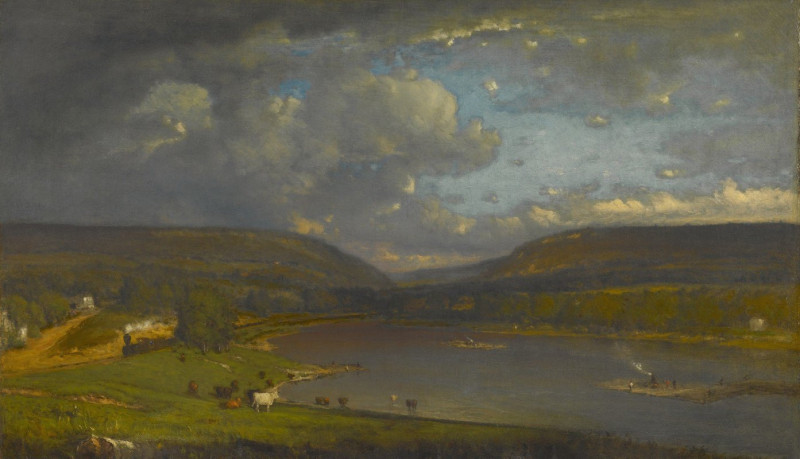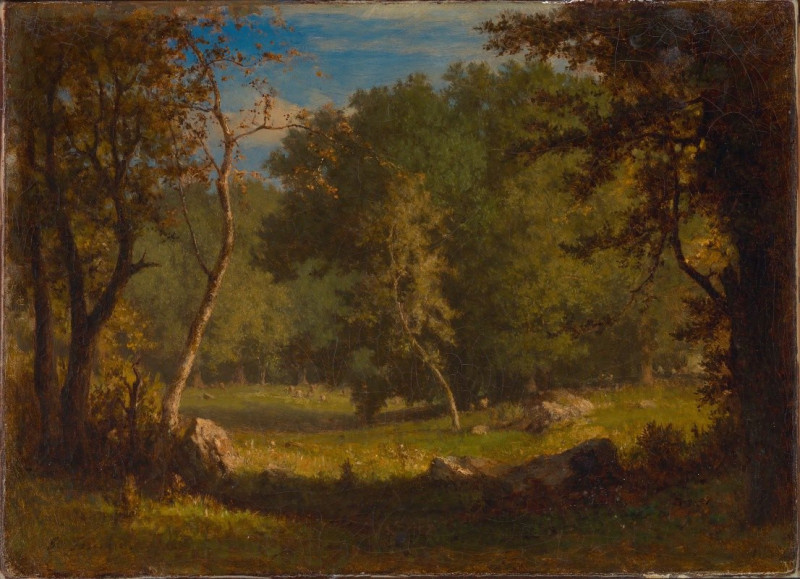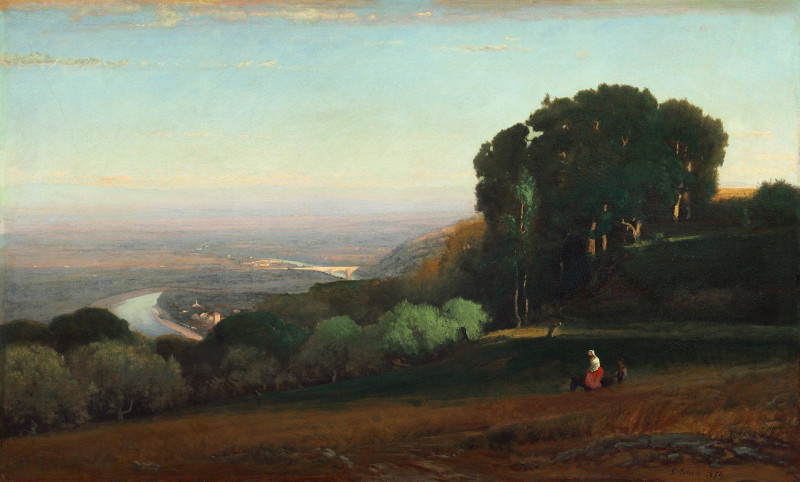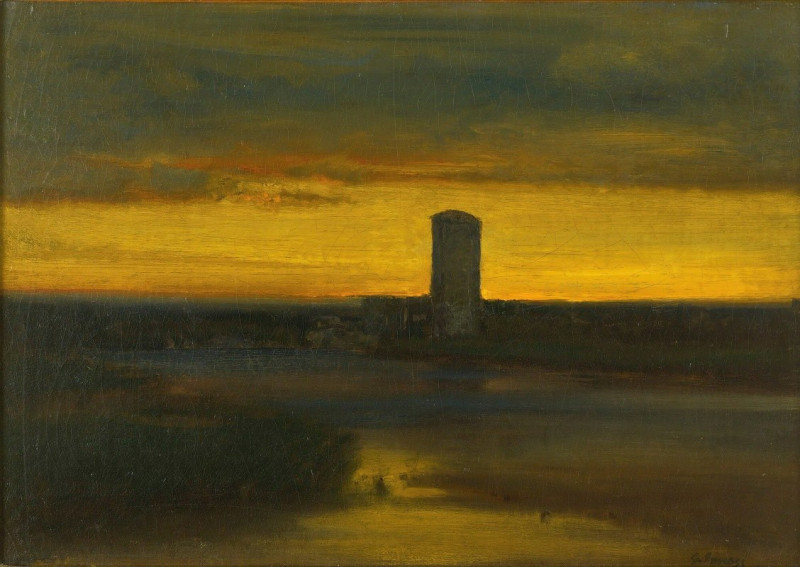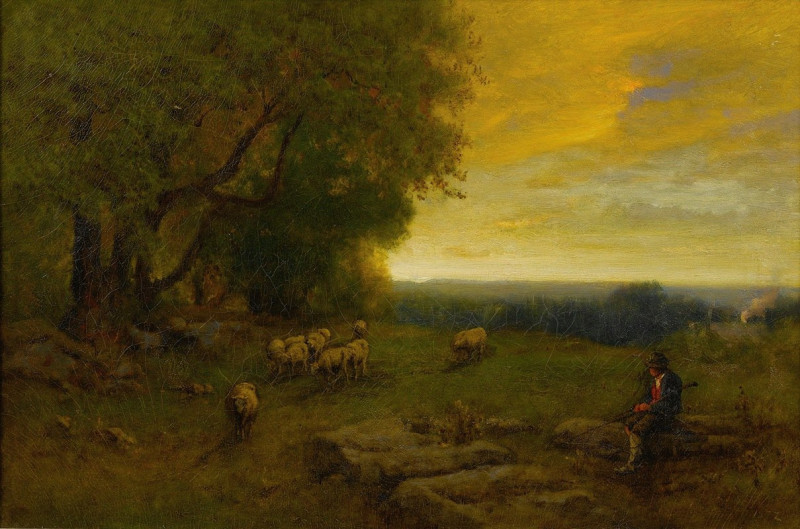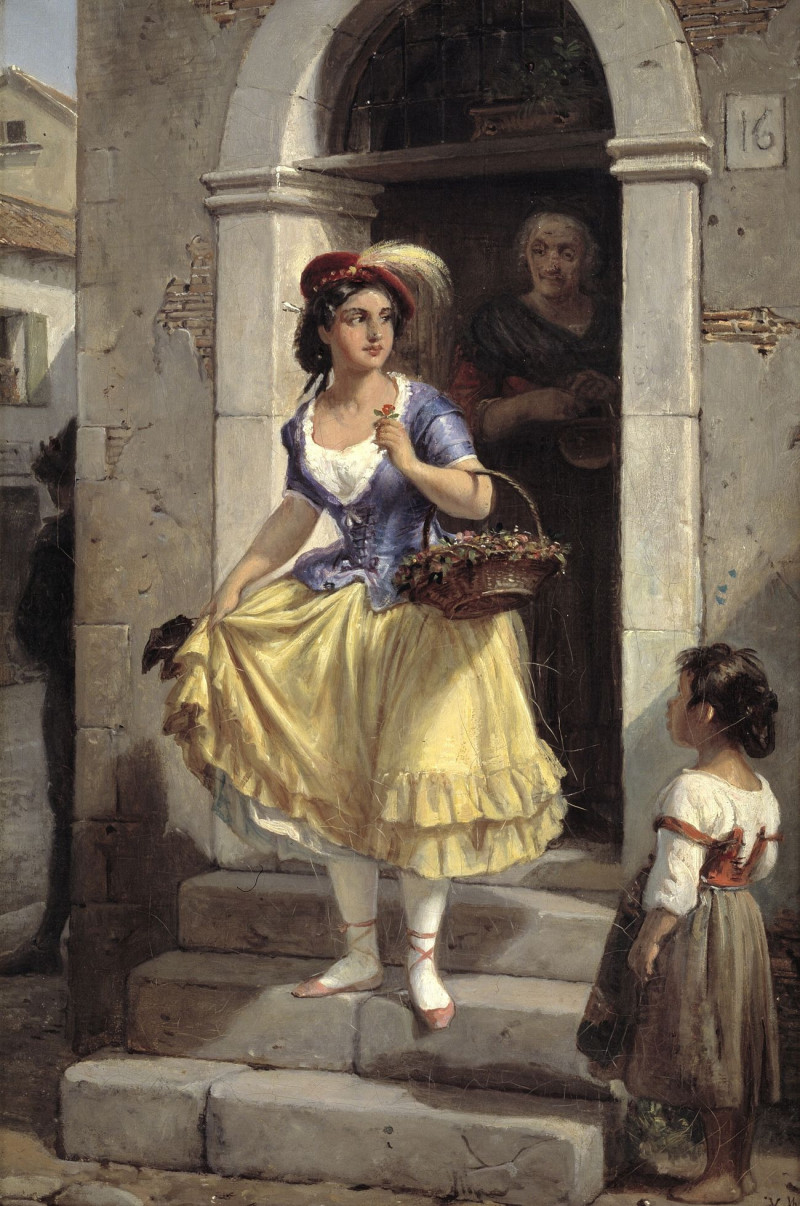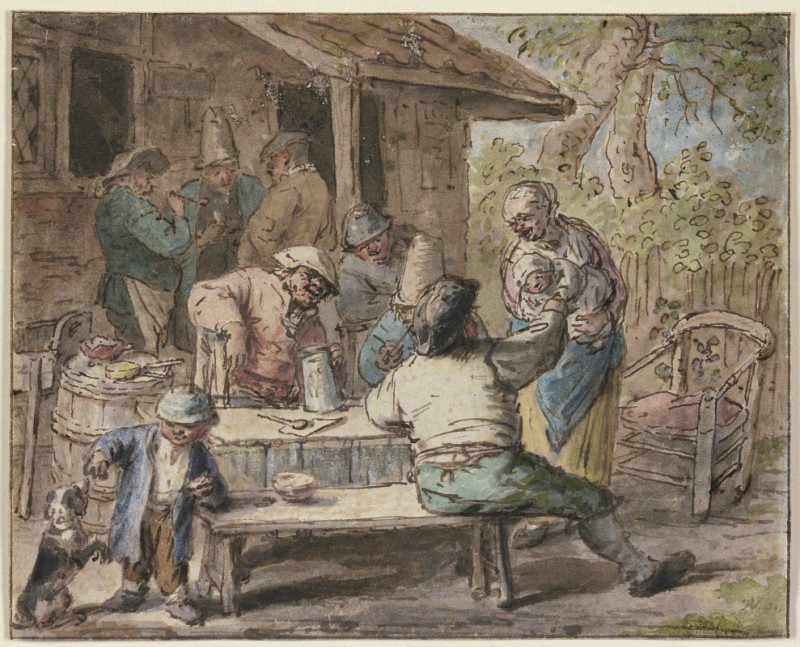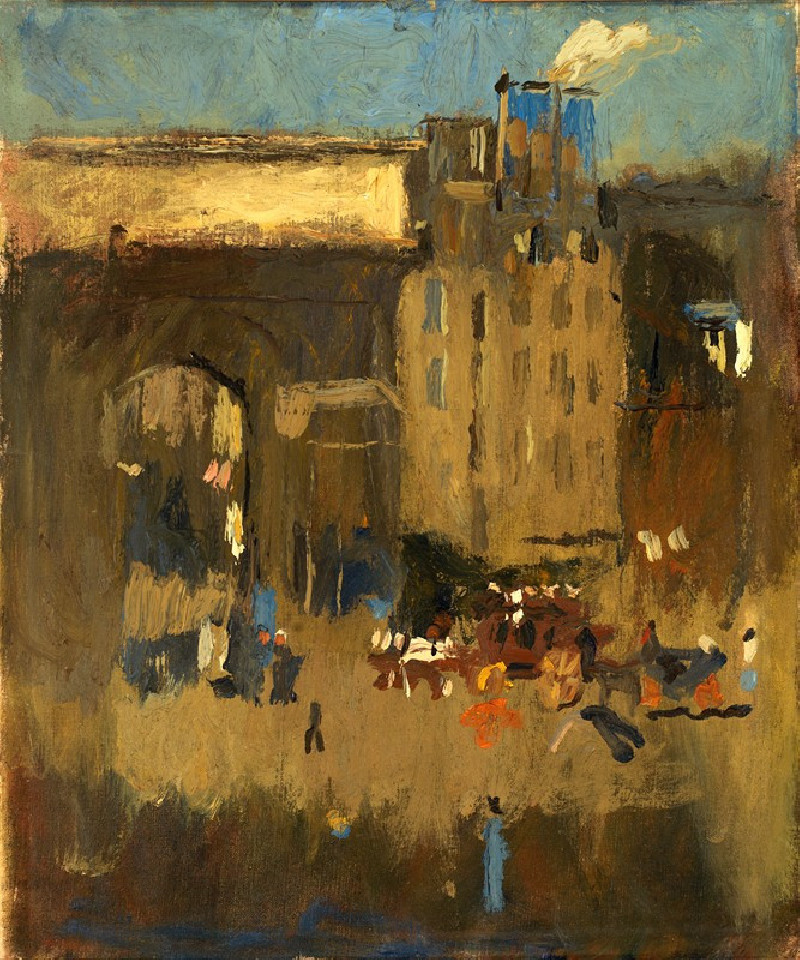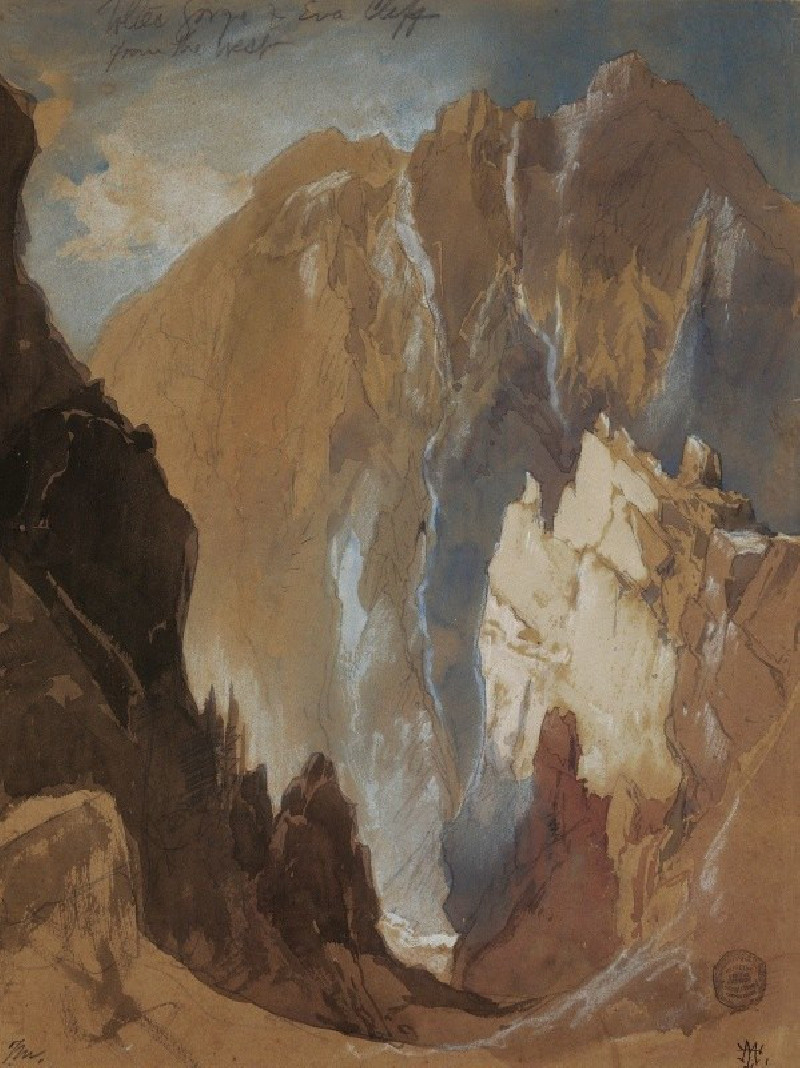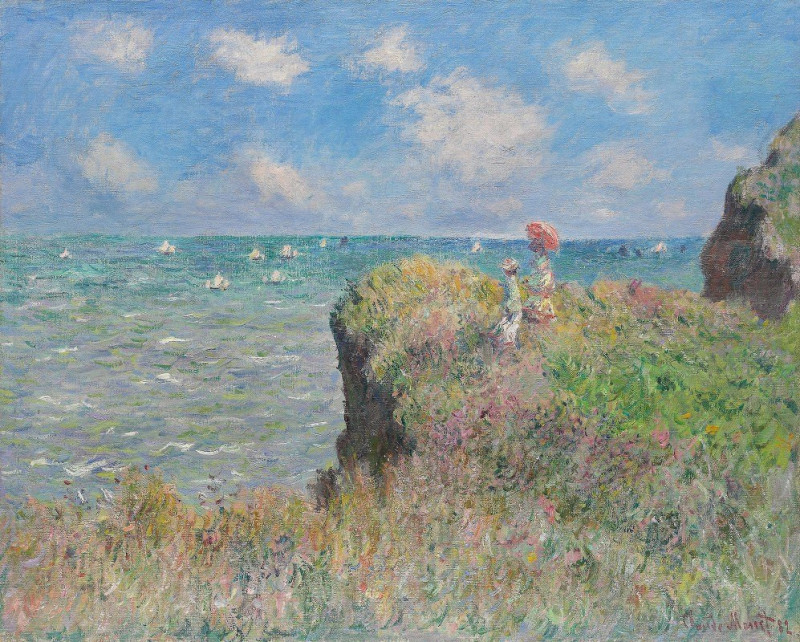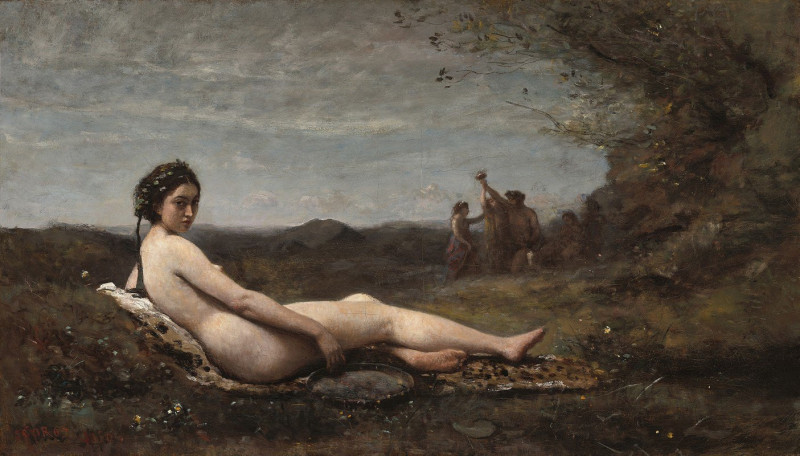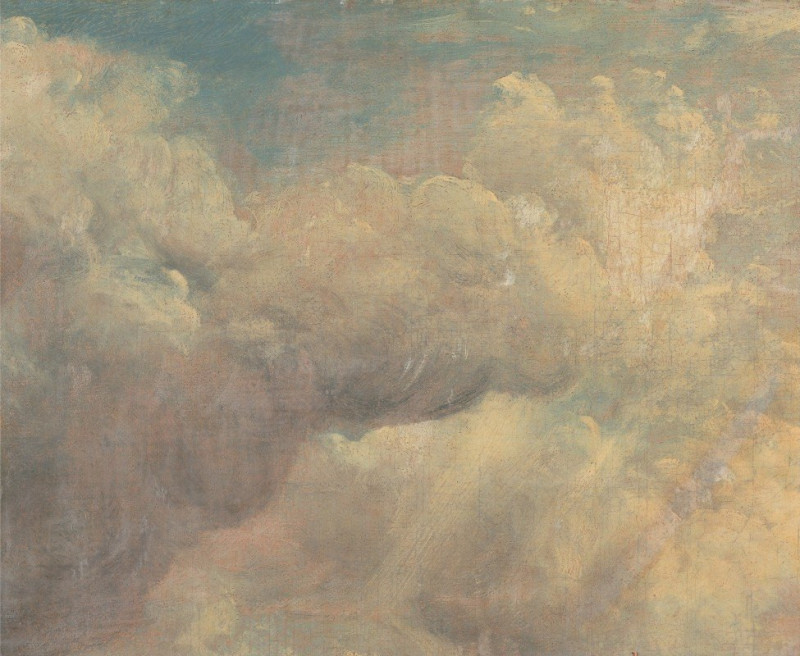Palisades on the Hudson (1866)
Technique: Giclée quality print
Recommended by our customers
More about this artwork
George Inness, one of the most influential American landscape painters of the 19th century, captures the serene yet imposing presence of the Hudson River in his 1866 masterpiece, "Palisades on the Hudson." This evocative painting invites viewers to explore the harmonious interplay of natural beauty and subtle human activity set against the expansive backdrop of the Hudson River.The composition focuses on the lush, verdant cliffs known as the Palisades which rise dramatically from the riverbanks. The texture and color of the cliffs are rendered with a rich palette of greens and browns, highlighting the rugged beauty of this geological feature. To the left, the river extends peacefully, carrying gentle ripples and reflections that capture the light of a soft, overcast sky. Boats of various sizes meander through the waters, their presence a quiet testament to human interaction with the natural world.Above, the expansive sky, filled with light clouds and subtle hues of blue and grey, suggests the vastness and tranquility that characterizes this iconic American landscape. Each element within Inness's painting works in concert, creating a sense of depth and atmosphere that is both tranquil and profound."Palisades on the Hudson" not only celebrates the natural beauty of the Hudson River Valley but also showcases George Inness's skill in expressing the transcendent qualities of nature through his art.
Delivery
Returns
George Inness (May 1, 1825 – August 3, 1894) was a prominent American landscape painter.
Now recognized as one of the most influential American artists of the nineteenth century, Inness was influenced by the Hudson River School at the start of his career. He also studied the Old Masters, and artists of the Barbizon school during later trips to Europe. There he was introduced to the theology of Emanuel Swedenborg, which was significant for him; he expressed that spiritualism in the works of his maturity (1879–1894).


